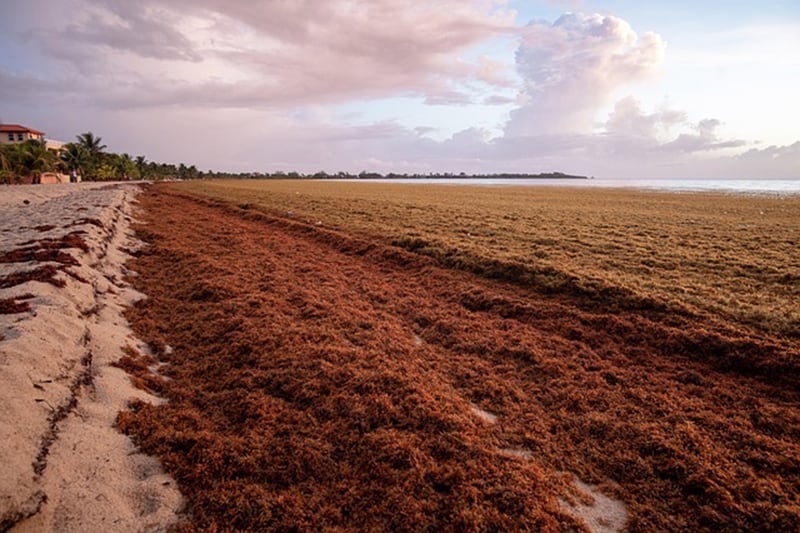
Beaches across several parts of the Caribbean, Mexico, and Florida are waging war against sargassum, an unsightly and unpleasantly fragrant seaweed that wreaked havoc in 2018 and again this year.
While the brown algae generally makes an appearance every April through October, there’s been a major surge in it and hotels, tourism boards, and private firms are fighting the uninvited guest with several strategies.
Various resort brands provide 24/7 day beach cams to show problem areas or cleared spots, while other properties in Mexico built barriers or have deployed special clean-up equipment.
In Tulum, nearly 2,000 tons of sargassum have been collected and discarded and Caribbean beaches have spent an estimated $120 million to tackle sargassum clean-up last year, reports Edmund Bartlett, Jamaica’s Minister of Tourism and co-chair, Global Tourism Resilience and Crisis Management Centre, who spoke at a conference this summer. A spokesperson with Visit Florida declined to respond to Prevue’s request for comment.
Clean-up efforts are paying off. According to an update this summer from tourism officials, “more than 83% of the beaches frequented by tourists in the Mexican Caribbean are sargassum-free or have trace amounts, and overall volume is shrinking everyday.”
Additionally, Mexico is looking to make lemons out of lemonade. Numerous sargassum recycling projects have been proposed, including golf course fertilization, shoe soles, construction materials, cellulose for paper, electricity generation in hotels, composting and obtaining collagen for cosmetic use, according to a Quintana Roo Tourism Board representative.
Destinations and properties will need to continue thinking creatively, says Bartlett. “The effective countering of this threat will require the different nations’ governments coming together [for] research, mitigating contributing factors, identifying global best practices in adaptation and developing a comprehensive scientific initiative…without harming the ecosystem.”
Click here for more information.
DON’T MISS THIS RELATED STORY
Sargassum Seaweed Invades Gulf of Mexico










